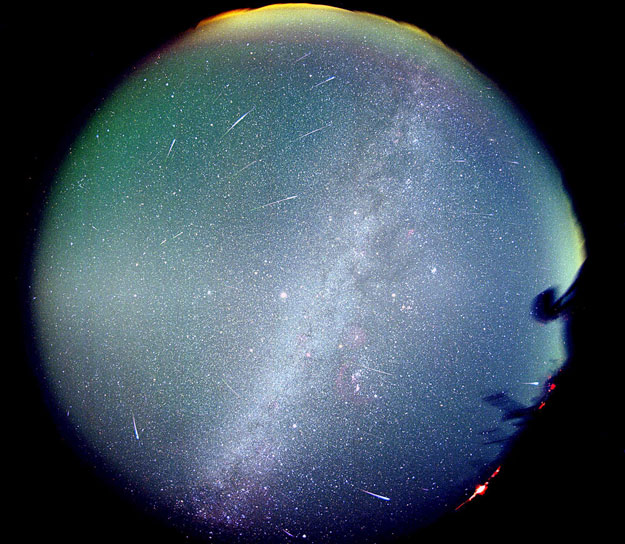
|
Credit & Copyright: Chen Huang-Ming
Explanation:
Is Leo leaking? Leo, the famous sky constellation visible on the left of the
above all-sky photograph,
appears to be the source of all the
meteors seen in last year's
Leonids Meteor Shower.
That
Leonids point back to
Leo is not a surprise - it is the reason that this November
meteor shower
is called the Leonids.
Sand-sized debris expelled from
Comet Tempel-Tuttle
follows a well-defined orbit about our Sun,
and the part of the orbit that approaches
Earth
is superposed in front of the constellation Leo.
Therefore, when Earth crosses this orbit, the radiant point of
falling debris appears in Leo.
Over 100 bright
meteors can be seen in the above half-hour exposure.
The intensity of the
Leonid Meteor Shower in 2002 is uncertain
but may approach one per second for
some locations on November 18 and 19.
|
January February March April May June July August September October November December |
| ||||||||||||||||||||||||||||||||||||||||||||||||
NASA Web Site Statements, Warnings, and Disclaimers
NASA Official: Jay Norris. Specific rights apply.
A service of: LHEA at NASA / GSFC
& Michigan Tech. U.
Based on Astronomy Picture
Of the Day
Publications with keywords: Leonids - meteor shower
Publications with words: Leonids - meteor shower
See also:
